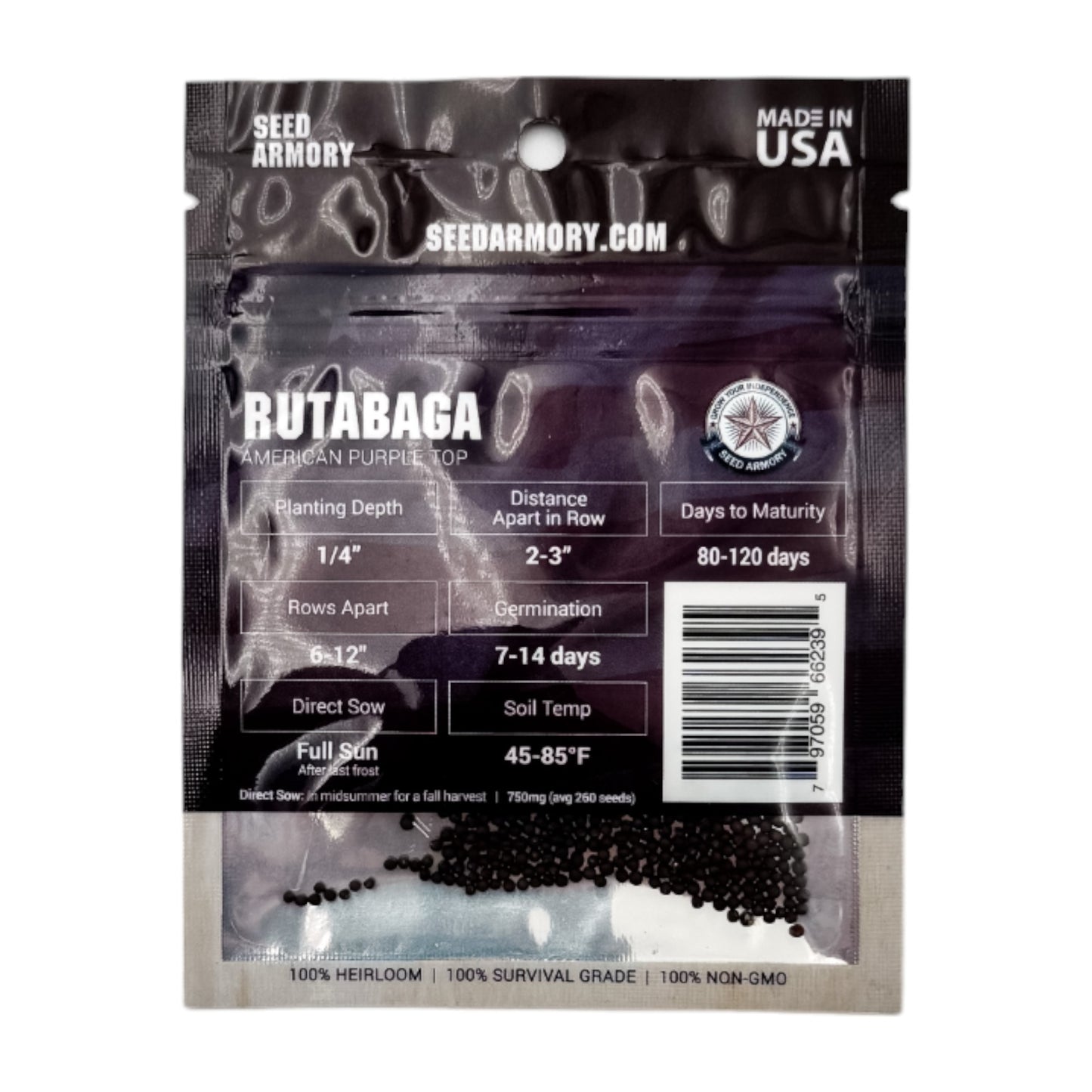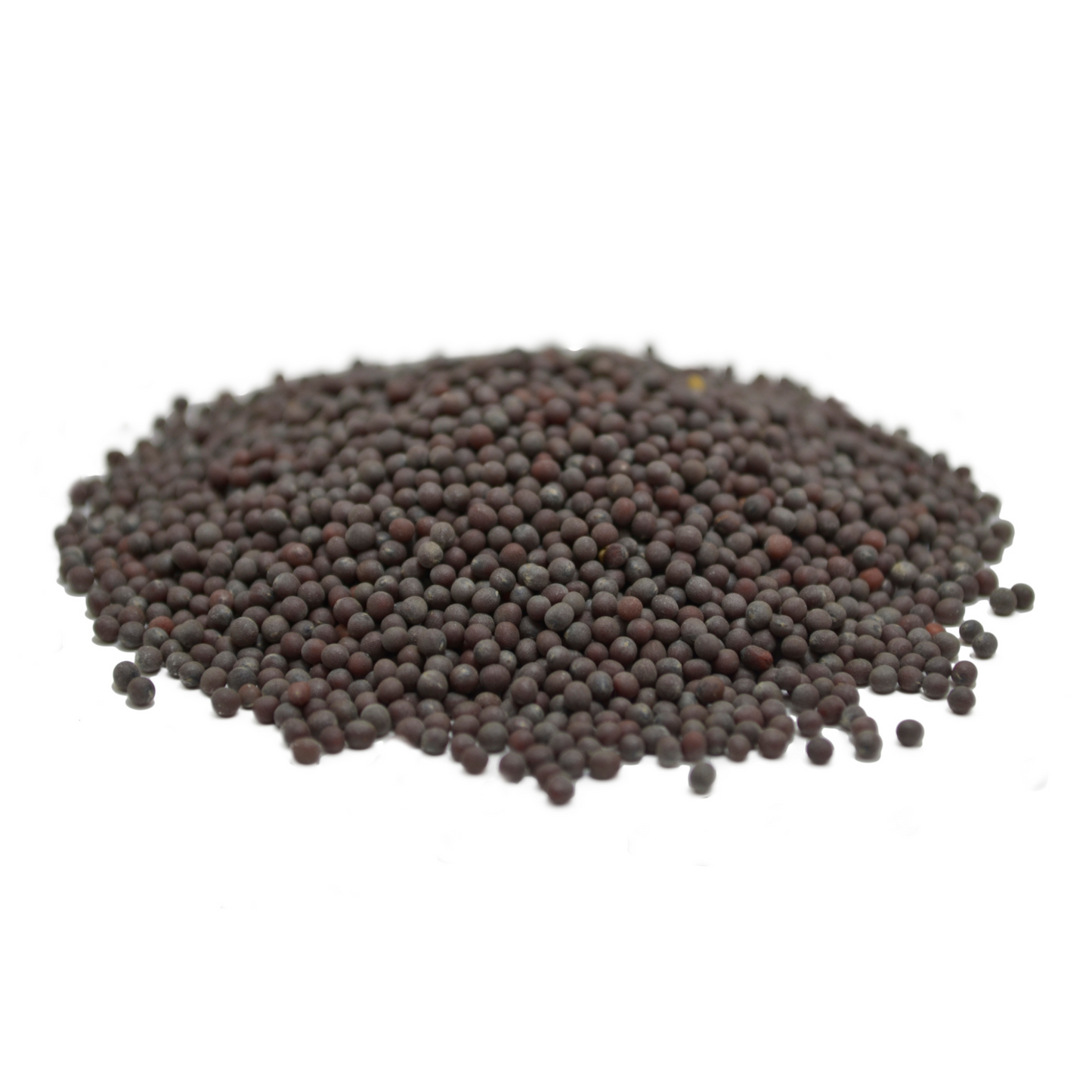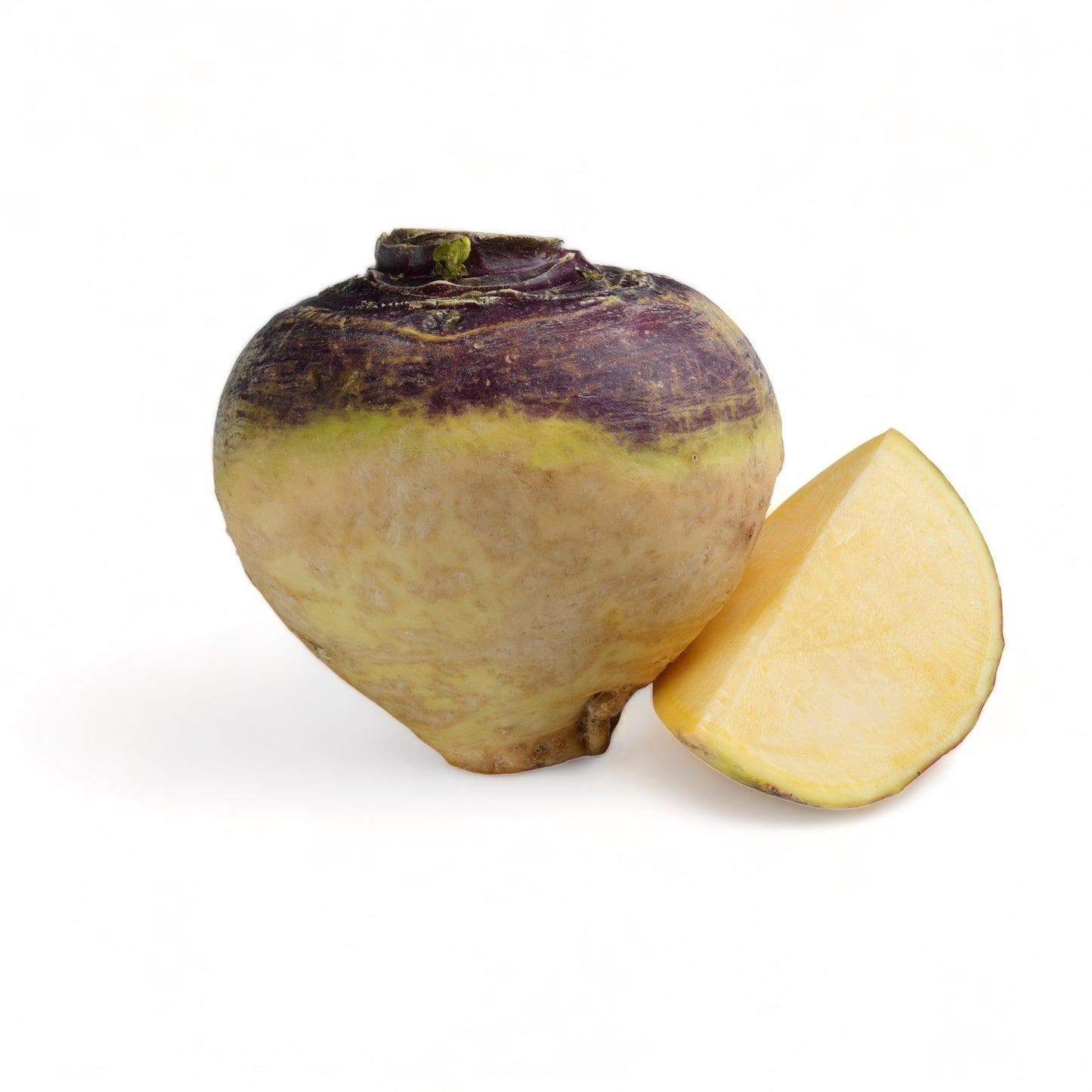- Type: Root Vegetables
Rutabaga Seeds - American Purple Top
Packed in Resealable Long Life Mylar
Moisture Proof Packets
10+ Year Survival Seed Viability
- Category: Vegetable
- Type: Rutabaga
- Variety: American Purple Top
- Family: Brassica
- Botanical Name: Brassica napus
- Hardiness Zones: 3,4,5,6,7,8,9
- Growing Difficulty: 2
- Soil PH: 5.5 to 6.5
- Fertilizer Requirements: None
- Soil Type: Rich, Moist, Well-Draining
- Germination (days): 7 to 14
- Soil Temp for Germination: 45-85°F
- Lighting Conditions: FULL SUN
- Days to Maturity: 80 - 120
- Planting Depth: 1/4”
- Distance Apart (in row): 2-3"
- Row Spacing: 6-12"
Sowing Instructions
DIRECT SOW AFTER DANGER OF LAST FROST
FALL HARVEST: DIRECT SOW IN MIDSUMMER FOR A FALL HARVEST
Starting Indoors
DO NOT START INDOORS
Growing Tips
For a bumper crop of Rutabaga's, midsummer is your best time to plant. They will do well in a compost or manure rich soil that is well drained but kept moist.
When the plants reach about 4 inches tall, thin to 4-6 inches apart.
Wait until the greens are 4 inches before thinning your crop, so you can use the harvested greens (instead of wasting).
Culinary Uses
Most people are unaware of how to use a Rutabaga in recipes. Believe it or not, rutabagas can be used like potatoes or other root vegetables.
Prepare rutabagas by roasting, cooking or even as a mashed root vegetable. They are also great in casseroles, soups and stews.
Harvesting Crops
Wait until after you have had several hard frosts before pulling or digging the rutabagas out of the ground. Make sure to cut the stalks down to about an inch.
Rutabagas will store for up to six months in a refrigerator.
Harvesting Seed
Rutabagas are an interested plant to harvest seed from. They do not produce seed in the same year (biennial) and must overwinter before producing seed in their second year.
If you live in a warmer climate, simply placing a layer of mulch over them for the winter will provide enough protection. However, colder climates should dig out the rutabagas and trim the tops to 1 inch. Store these rutabagas in damp sand at about 33-40 degrees until you replant them in the spring.
Once replanted, the roots will send up flowering stalks that contain your seed pods. Wait until the seed pods turn brown and remove them before they shatter. You can also dig the entire plant up and hang the whole thing upside down over a paper bag (to catch seeds that are released).
If manually removing the seeds, crush the pods and collect. Store the seeds in a cool dry place for up to four years (depending on storage method).
Have a question?




Rutabaga Seeds - American Purple Top










